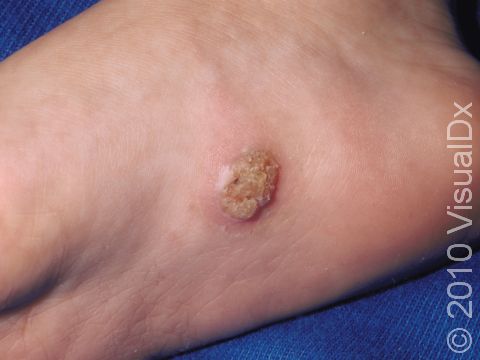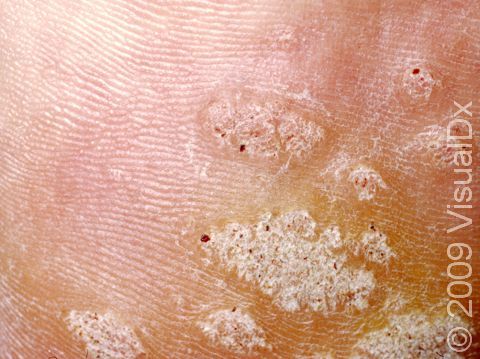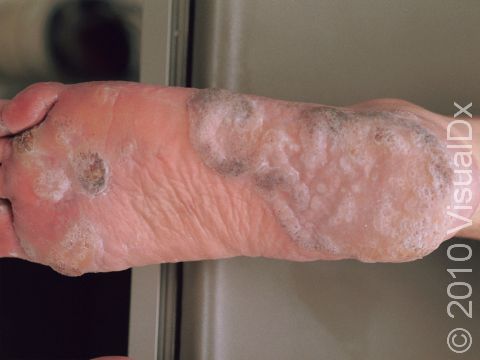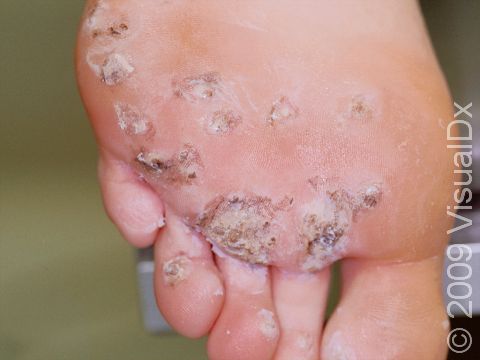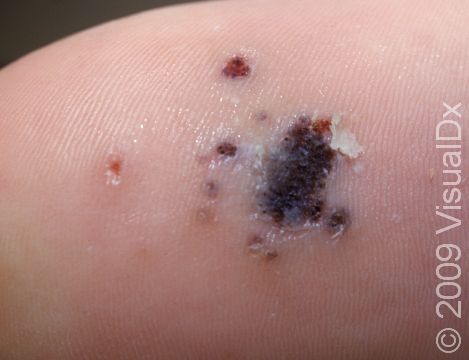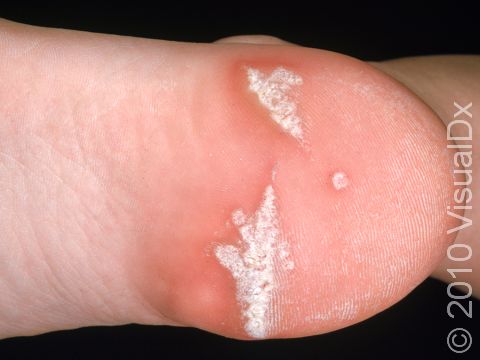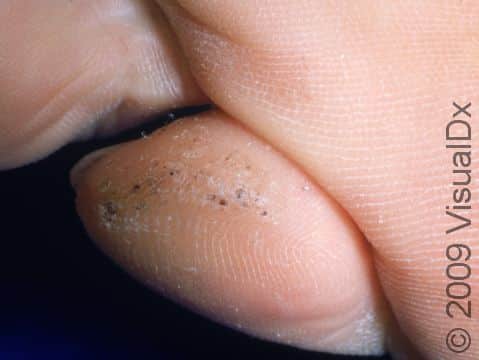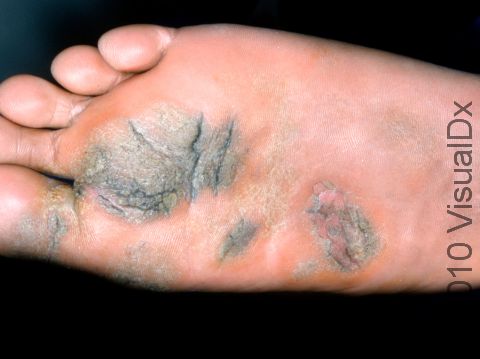Plantar Wart
Warts are growths of the skin and mucous membranes (the mouth or genitals) that are caused by over 100 types of the human papillomavirus (HPV). The virus causes thickening of the top skin layer. A plantar wart occurs on the sole of the foot. It can look and feel like a callus. Plantar warts can be small, or they can grow to cover most of the sole of the foot. They are usually painless and go away on their own, sometimes taking a few months to resolve (but can take up to 2 years).
Warts are usually acquired from person-to-person contact. The virus is not highly contagious but can cause an infection by entering through a small break in the skin. In the same way, warts can be spread to other places on your own body. The virus is rarely transferred by touching an object used by an infected person.
Who's At Risk?
Warts can affect people of any age, but they are most common in those 12-16 years old. It is estimated that 20% of schoolchildren and about 10% of the general population have warts. Those with HIV or organ transplants or on chemotherapy have a higher incidence of warts due to their weakened immune system.
Signs & Symptoms
The most common locations for plantar warts include:
- Soles of the feet, especially the weight-bearing areas (eg, the heels and balls of the feet)
- Undersides of the toes
Plantar warts may occur singly or in clusters. They appear as thick, rough, callus-like thickenings on the soles of the feet. In addition, plantar warts often have multiple small black “dots” at the surface, which are actually tiny blood vessels.
Plantar warts are usually tender.
Infection with plantar warts can be described as:
- Small plantar warts – one or few small, painless lesions
- Moderate plantar warts – multiple lesions, which may be uncomfortable
- Giant plantar warts – the warts cover a large part of the sole and may cause significant discomfort and pain
Self-Care Guidelines
Because warts can resolve on their own, it is not necessary to treat all warts. Additionally, treating warts may not always destroy them, nor will it necessarily keep other warts from appearing. Treatment can be painful and cause scars and might need to be repeated, so it should only be done in cases where the warts are highly bothersome or interfere with daily life.
- Duct tape applied daily to the affected area seems to work for unknown reasons. The tape should be very sticky and kept on for a few days. Between changes of duct tape, the wart should be soaked in warm water, and any loose skin should be removed every few days with a mild abrasive, like a pumice stone or emery board.
- Over-the-counter wart removers have a high percentage of salicylic acid and work by dissolving away the layer of skin infected with the virus. This treatment needs to be used daily and can sometimes be irritating if it touches unaffected skin around it; 40% salicylic acid self-stick pads appear to be one of the most effective types. Cut out a pad that covers the wart, and then apply duct tape over the pad to secure it. Keep on for 2–3 days. Remove the pad and tape and scrub away the top layer of dead skin, now white-colored, with an emery board or pumice stone. Reapply a new 40% salicylic acid pad and duct tape. Keep removing dead skin and reapplying every few days until the wart is gone. Many plantar warts will respond in 1–2 months.
- Over-the-counter freezing medications are available but have not been found to be very effective.
- Family members should avoid sharing personal items such as towels.
Treatments
Once you have been diagnosed with a plantar wart, your physician may try one or more of the following treatments:
- Freezing with liquid nitrogen (cryosurgery)
- Burning with an electric needle (electrocautery)
- Using a laser to disrupt the blood supply of the warts
- Application of cantharidin, podophyllin, tretinoin, or salicylic acid
- Injection with Candida antigen, an allergy-causing protein, or with bleomycin, a chemotherapy drug, directly into the warts
Plantar warts can be very stubborn, and effective treatment may take many months.
Visit Urgency
Make an appointment with a dermatologist or another physician if you have:
- Painful or bleeding warts.
- Rapidly spreading or multiplying warts.
- Warts that interfere with daily life and are not responsive to self-care.
People with diabetes or a circulatory disorder should have their warts treated by a physician.
Trusted Links
References
Bolognia, Jean L., ed. Dermatology, pp.1222, 1226. New York: Mosby, 2003.
Freedberg, Irwin M., ed. Fitzpatrick’s Dermatology in General Medicine. 6th ed. pp.2122-2124, 2127, 2368. New York: McGraw-Hill, 2003.
Last modified on October 10th, 2022 at 3:52 pm

Not sure what to look for?
Try our new Rash and Skin Condition Finder
